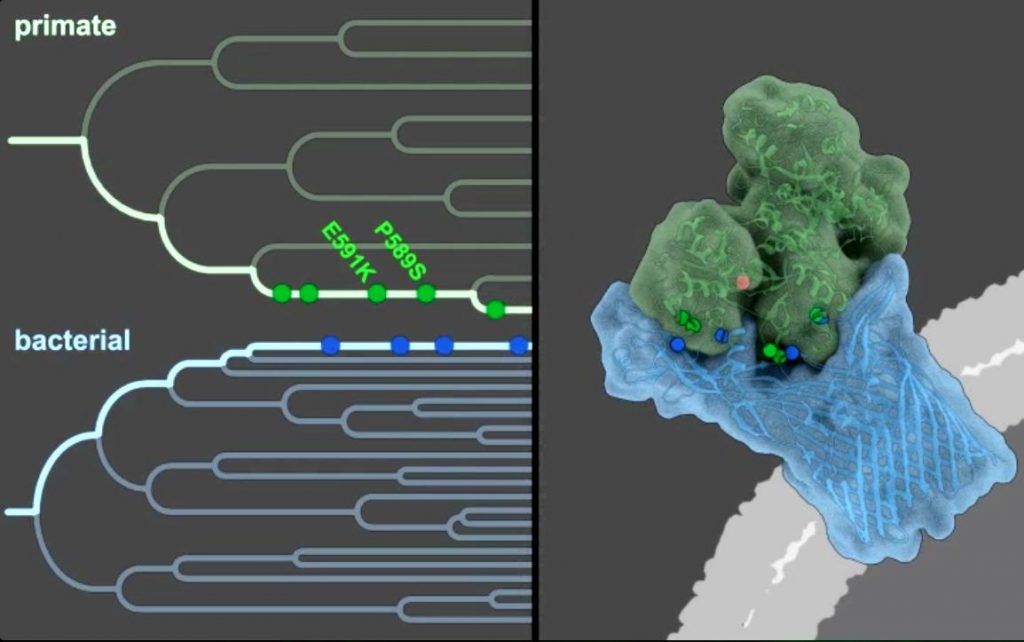
Hosts and pathogens are locked in an endless battle to gain selective advantages over one another. Host-pathogen interactions, therefore, provide valuable systems for studying evolutionary genetics, natural selection, microbiology, and infectious disease. The sequestration of essential iron has emerged as a crucial innate defense system termed nutritional immunity, leading pathogens to evolve mechanisms of ‘iron piracy’ to scavenge this essential metal from host proteins. This battle for iron carries numerous consequences not only for host-pathogen evolution but also for microbial community interactions.
The Elde lab demonstrated that the iron carrier protein transferrin has evolved to allow hosts to escape bacterial “iron piracy”. For example, one transferrin polymorphism allows hosts to evade iron piracy by the pathogenic bacterium, Haemophilus influenzae, revealing a functional basis for standing genetic variation in the human population. These findings identify a central role for nutritional immunity in the persistent evolutionary conflicts between primates and bacterial pathogens.
References:

Escape from bacterial iron piracy through rapid evolution of transferrin.
Barber MF, Elde NC. Science. 2014 Dec;346(6215):1362.

Buried treasure: Evolutionary perspectives on microbial iron piracy.
Barber MF, Elde NC. Trends Genet. 2015 Nov;31(11):627.
Press Releases and Media:

University of Utah Health: “Human DNA Shows Traces of 40 Million-Year Battle for Survival Between Primate and Pathogen”

